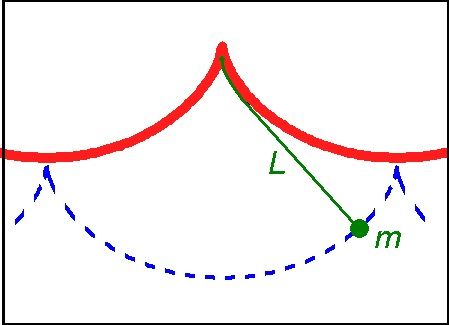Congratulations on a brilliant experiment, zoelra. It may be, it just may be, the key to Bessler's secret.zoelra wrote:Grimer,
First let me say I prefer locking the pendulum after each half swing. After the swing, the pendulum is caught in a catch, and the counter weight takes over lifting the pendulum back to it's initial position, then the pendulum is released and the process repeats itself. Doing this brings out the problem with the 2SO as I will try to describe below.
In my tests with a standard Milkovic style 2SO, the pendulum never returned to the same drop height relative to the pendulum pivot point, and I believe it is because the pivot point accelerates downward, due to the CF of the swinging pendulum bob.
This led me to performing a simple pendulum drop experiment in an elevator. The pendulum always returned to the drop height even though the elevator was moving down. I have to assume it was due to the elevator moving downward at a "constant" velocity. If we can find a replacement for the main bar (perhaps some type of linkage) so the pivot point can move downwards but not accelerate, then the bob would return to the initial drop height, relative to the pivot point, then as I mentioned above, the pendulum would be caught at the end of the swing, and the counter weight would lift the pendulum back to it's initial position.
In the simple two radian pendulum swing the jerk energy is suppressed. Put in another way, the pendulum attempts to drag its pivot down with the ersatz gravity force but it can't because the pivot is rigid. The force acts but it doesn't move through a distance so it doesn't do any work. The jerk energy is buried in material strain energy. As similar situation occurs with the Roberval balance as Cloud Camper explained in one of his posts.
To unlock the simple pendulum jerk energy it's necessary to move the pivot along a path so that the bob follows the brachistochrone. This allows the 3rd derivative energy, suppressed in the circular swing, to be manifest as angular momentum.
Some time ago, in a PM, Cbucket suggested that it might be an idea to have pendulums on cross bars which are set swinging as they passed the wheel zenith. At the time I didn't place any value in the suggestion since I couldn't see the significance of the combined swing of the bob and vertical motion of the pivot.
But a few days ago I realised that the net effect of this combined motion could well mean the path of the bob was being moved from circular to brachistochrone with consequent release of jerk energy ( = 3rd derivative energy = angular momentum).
Could you let us have more details of your lift experiment, please? Measurements and photos would be nice. A video would be even better.
Once again, congratulations on your imaginative experiment. I would click your greenie - but I see I already have.






